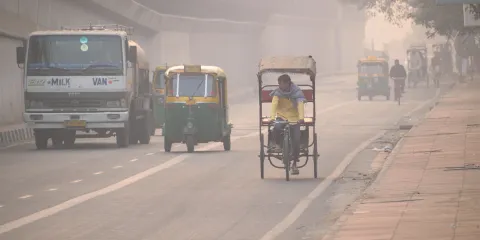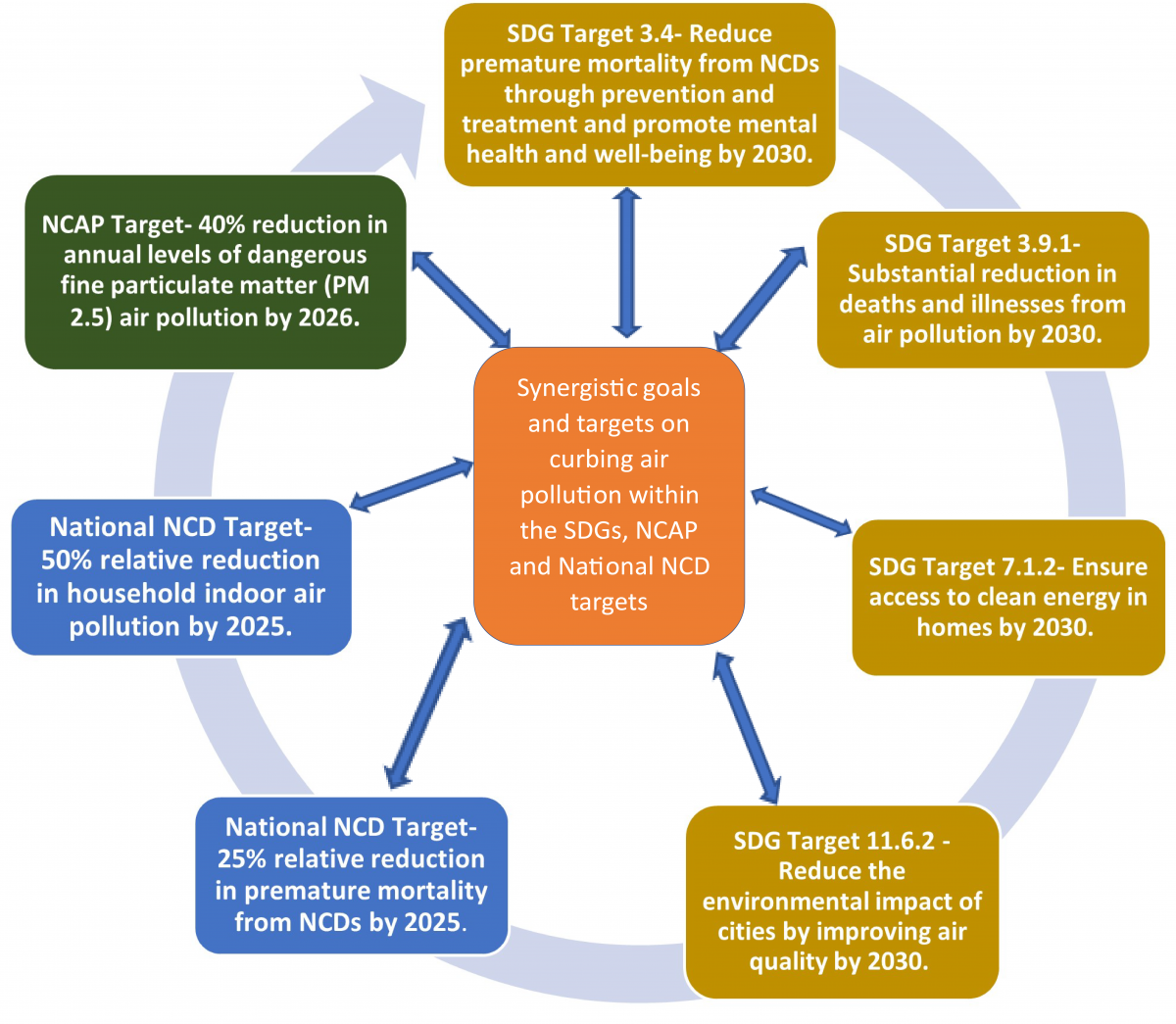Getting a grip on air pollution in the world’s most populous country

Air pollution is the world’s single largest environmental health risk, and one of the major risk factors for non-communicable diseases (NCDs). It is responsible for over 7 million deaths - nearly 12% of all deaths globally - with some estimates being much higher. Low- and middle-income countries (LMICs) face the heaviest burden from air pollution, with over 90% of premature deaths taking place in LMICs.
Among these countries is the world’s most populous one – India, which is grappling with serious threats from air pollution and climate change. According to the IQAir Report 2022, India ranked eighth on the list most polluted countries, and is home to 39 out of the 50 most polluted cities in the world. In 2019, air pollution in India contributed to at least 1.67 million deaths, and loss of 1.36 percent of GDP (equivalent to US$36.8 billion). Several research studies highlighted air pollution as the number one contributor to major NCDs in the country. In response to the growing NCD burden (65% of total deaths in India in 2019) and to achieve the Sustainable Development Goals (SDGs), addressing air pollution is need of the hour.

Figure 1: Synergistic goals and targets on curbing air pollution within the SDGs, NCAP and National NCD targets. (Image source- HIA)
Civil society pushing the clean air agenda
The unifying SDG agenda aligns with India’s national NCD targets and National Clean Air Programme (NCAP) target. The last couple of years have indeed seen increased attention to air pollution in the country, particularly through implementation of various nation-wide programmes and budgetary allocations for air quality management. Healthy India Alliance has been doing its part in amplifying these initiatives.
We are pleased to report that flagship programmes and policies to address air pollution in India are being implemented by key ministries and agencies, including the Central Pollution Control Board (CPCB)with the Ministry of Environment, Forest and Climate Change (MoEFCC), and the National Centre for Disease Control (NCDC) with the Ministry of Health and Family Welfare (MoHFW). The National Air Quality Monitoring Programme (NAMP), NCAP, and National Programme for Climate Change and Human Health (NPCCHH) are among the key programmes aiming to mitigate this threat to human and planetary health in India.
As a part of NCD Alliance’s Advocacy Institute NCD Prevention Accelerator Programme, supported by Swedish International Development Cooperation Agency, HIA undertook a national situational analysis on NCDs and air pollution in India. A desk review, key stakeholder dialogues and a public opinion poll were conducted to gather insights on NCD prevention and control in India with a focus on air pollution. We organised a National Civil Society Consultation on NCDs and Air Pollution to bring together important stakeholders to identify and discuss opportunities, challenges, and strategic priorities for action. Representatives from MoHFW, MoEFCC, Government of India, WHO, United Nations Environment Programme (India), United Nations Development Programme (India), NCDC and CPCB were engaged.
Recommendations to drive informed policy
Through this work, we were able to make some key recommendations. For instance, it is clear that for a comprehensive national response to NCDs in India, air pollution must be positioned as a critical public health issue, and not just an environmental issue. Other recommendations focused on issues like prioritising multi-stakeholder and multi-sectoral coordination, identifying synergies between key NCDs and air pollution centric programmes, integrating the expertise of people living with NCDs in air pollution mitigation strategies, and strengthening the evidence base on the linkages of NCDs and air pollution.
HIA will be synthesising the key findings from our work into a scientific publication, which will call for integrated action on NCDs and air pollution. We also plan to tap into the power of a multi-stakeholder framework, garnering support from various national, regional and global partners. We have developed and released various impactful resources, bringing valuable information to inform policy development. These include the National Situational Analysis Report, a Microdocumentary on NCDs and air pollution, a Policy Brief on Air Pollution Mitigation, and a Sensitisation Brief: Let’s Act on NCDs and Air Pollution. This kind of multi-sectoral, all-of-society approach is essential for robust air pollution mitigation in India and in all countries across the globe.
About the authors
Ms Radhika Shrivastav is the Senior Director at HRIDAY and leads the Secretariat of the Healthy India Alliance. She is also a Governing Board member for HIA. She works towards addressing NCDs from a health and development perspective, particularly in the context of Goal 3.4 under the SDGs. She holds two Masters’ degrees in Nutrition and Public Health.
Dr Barsa Priyadarshini Rout is working as Project Officer at HRIDAY. She co-ordinates the Healthy India Alliance activities that foster engagement of multi-sectoral CSOs to address NCDs through meaningful engagement of CSOs, people living with NCDs and young people. She is a public health expert with a Master of Public Health degree from Indian Institute of Public Health, Gandhinagar, India.